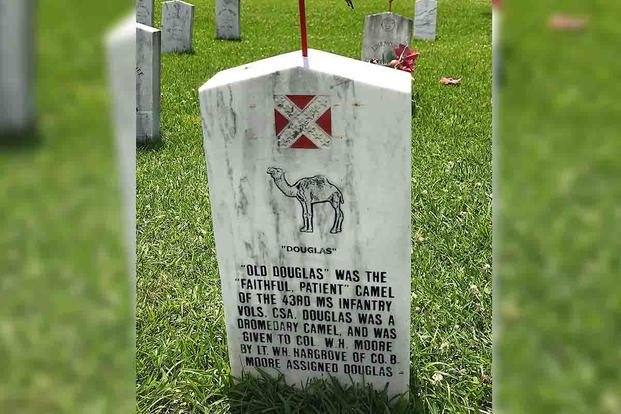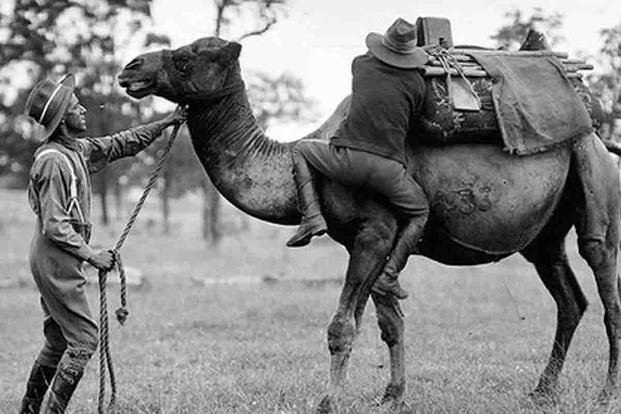In the late 1850s, the U.S. Army experimented with using camels as pack animals in the American Southwest, where horses and mules routinely suffered from dehydration. Camels from the Ottoman Empire were shipped to the United States in 1853. Secretary of War Jefferson Davis ordered they be tested on routes across the desert to California.
The camel experiment was a success, but the Army was wholly uninterested in camels. Before there could be an internal struggle about it, the Civil War broke out in 1861. The secretary of war became president of the Confederacy, and the idea died out. The U.S. Army wasn't the only one interested in testing camels; that's how a dromedary -- a one-humped camel -- ended up in the Confederate Army.
Douglas the Dromedary, also known as Douglas the Camel and "Old Douglas," was purchased by planters in Mobile, Alabama, around the same time the Army was sending camels of its own to Texas. Local farmers wanted to see whether they could be effective on their plantations. Long story short: They weren't.
That wasn't the end for Old Douglas, though. He was given to Col. William Moore of the 43rd Mississippi Infantry Regiment at the start of the Civil War. Douglas became a pack animal for the unit as well as a mascot. Douglas got along so well with the men of the unit, the 43rd became known as the "Camel Regiment."
The horses weren't so happy about the camel, however, so Douglas spent much of his time outside of camp, grazing freely and refusing to be leashed. He came when called, and dutifully sat down to be loaded with supplies for the regimental band when the time came. Douglas marched north with the 43rd, fighting at the battles of Iuka, Corinth and at Vicksburg.
Coincidentally, the Union troops at all three of those battles included the 8th Wisconsin Volunteer Infantry Regiment, whose mascot was "Old Abe." Old Abe, named for President Lincoln, accompanied the 8th Wisconsin in combat for its entire Civil War service. This might be the only time a camel and an eagle fought on the same battlefield.
Read: The 101st Airborne's 'Screaming Eagle' Has a Name and a Civil War History
Sadly for the men of the 43rd Mississippi, Old Douglas was shot and killed at the Siege of Vicksburg in 1863, allegedly killed by a Union skirmisher. The rebels were so angered by the death of their beloved mascot that they vowed revenge on the Yankee who killed him. Col. Robert Bevier, commander of the 5th Missouri, gathered six of his best sharpshooters to kill the man.

The Union soldier who killed Douglas the Camel was reportedly hit, but no one ever saw what became of him. Across the lines, Old Abe was in perfect condition and would survive the battle and the Civil War. Douglas was actually eaten by the starving Confederates at Vicksburg. What was left of him was buried in his own grave, which still stands today in Vicksburg's Cedar Hill Cemetery.
-- Blake Stilwell can be reached at blake.stilwell@military.com. He can also be found on Twitter @blakestilwell or on LinkedIn.
Want to Learn More About Military Life?
Whether you're thinking of joining the military, looking for post-military careers or keeping up with military life and benefits, Military.com has you covered. Subscribe to Military.com to have military news, updates and resources delivered directly to your inbox.
















